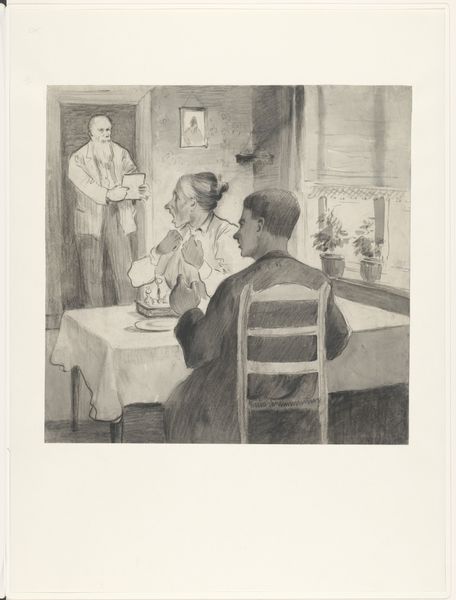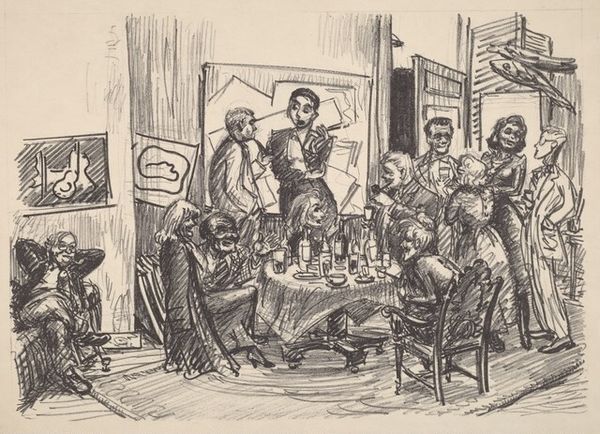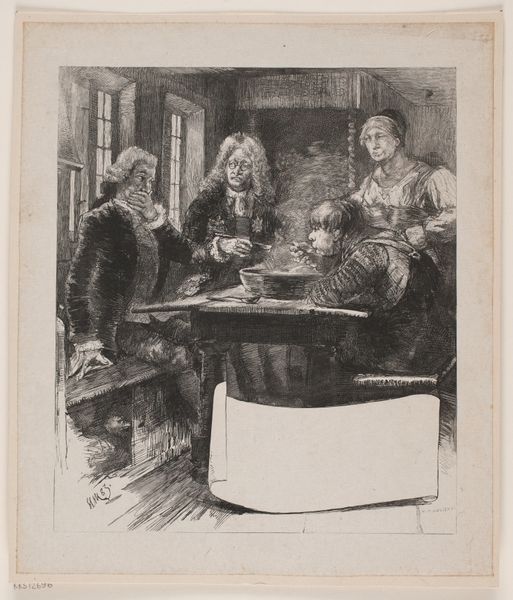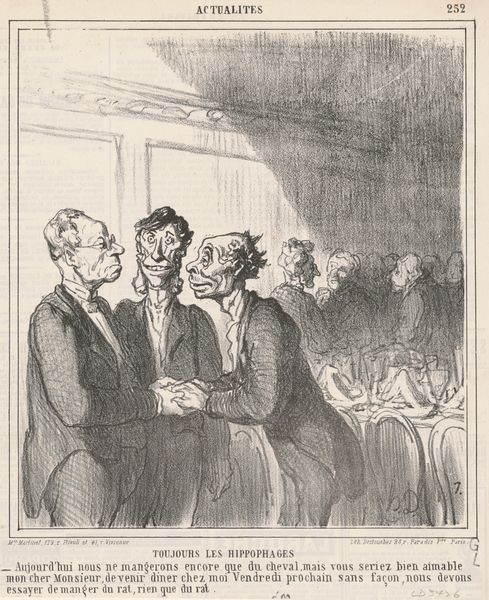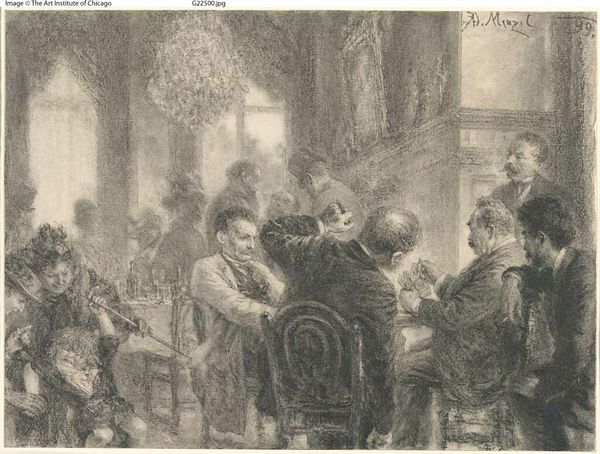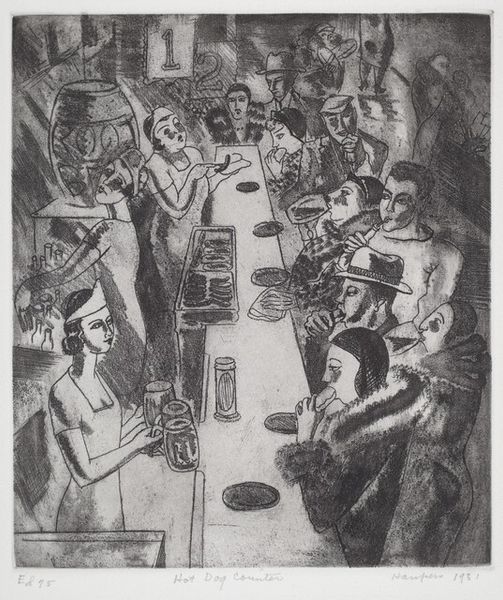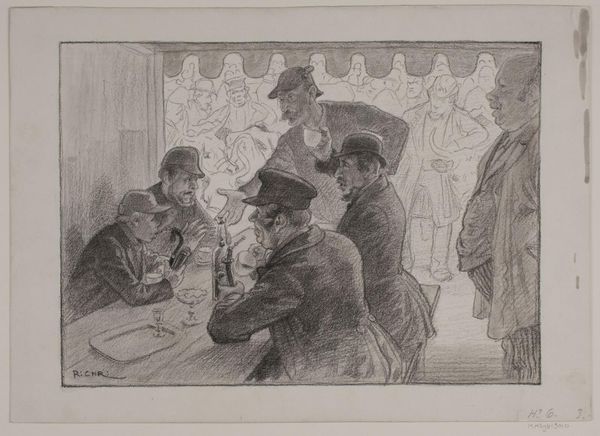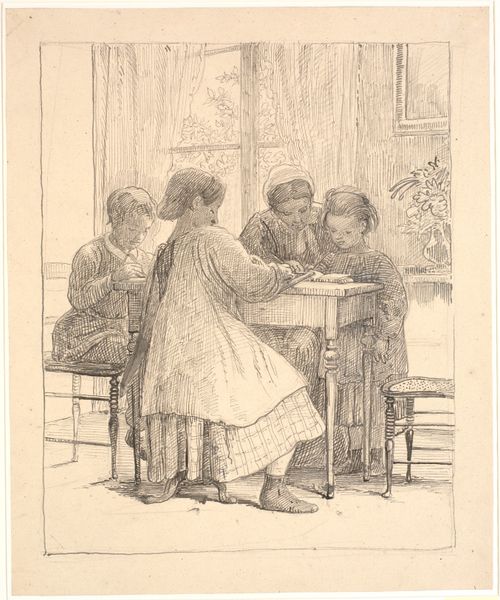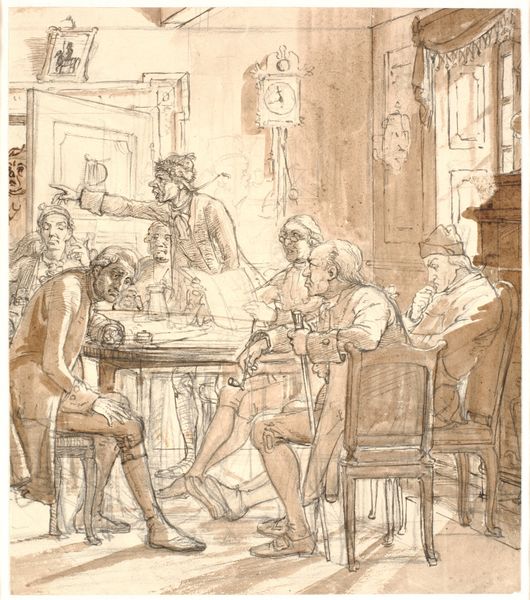
drawing, dry-media, pencil
#
portrait
#
drawing
#
charcoal drawing
#
figuration
#
dry-media
#
pencil drawing
#
pencil
#
line
#
genre-painting
#
realism
Copyright: Public domain
Curator: I'm struck by the sense of quiet and observation here. There's such an understated intensity. Editor: This is "Evacuees in a Cottage at Cookham" by Ethel Léontine Gabain, a charcoal and pencil drawing made in 1940. Gabain captures a very specific moment in British history, doesn’t she? Curator: Absolutely. The children around that table - there's such a stillness in their faces. That resonates with wartime iconography. It’s like the children have adopted that 'stiff upper lip'. Their eyes are pools of unspoken things, really remarkable. The very slight upward tilt of their eyes gives away that the children’s faces are, actually, pleading. Editor: The drawing was produced during a period of widespread evacuations from urban centers, when families sent children to rural areas believed to be safer from bombing raids. I'm really drawn to the framing – the room almost feels like a stage. The beams and pictures give the impression of safety and homeliness. The work feels both intimate and like propaganda. Curator: Yes, and note the cottage. It acts as more than a mere refuge; it's an almost archetypal symbol. It speaks of pastoral simplicity, a deliberate contrast to the implied terrors these children have fled. Think about the salt on the table – so resonant of life's daily rhythms. I love the way it hints at resilience, about keeping up traditions in fractured times. Even the sugar – nourishment, not only of body but soul too. Editor: It’s true. What also jumps out to me, from a political standpoint, is that these children were specifically billeted to families. The government sought the moral, middle class family to be representative, so this image participates in the political projection of moral Britain and the family under pressure. The artist’s framing helps. Curator: Indeed, there's something so universal in its depiction of vulnerability and resilience, even when looked at today. Those children represent us all at some level. It’s powerful, to see them both holding back and opening to others simultaneously. Editor: Thinking about it all, Gabain offers us an intensely personal encounter and something that touches a common thread of displacement in wartime Britain. Thank you.
Comments
No comments
Be the first to comment and join the conversation on the ultimate creative platform.
